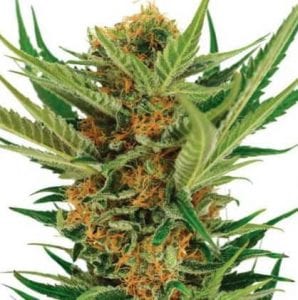When growing cannabis plants, gardeners need to consider the climate. It is just as valid for marijuana growing as vegetable gardening since some weed strains tolerate heat, cold, excessive moisture, drought, and other atmospheric conditions better than others.
So let’s discuss weed for tropical weather and explore some of the best cannabis strains for hot climates.
While looking for the best cannabis strains for hot climates, the strain that comes to mind is the Super Skunk cannabis strain; visit the official website to buy high-quality marijuana seeds.
Outdoor growers who need to augment their yields need to consider everything from light intensity to elevation. Please read on how to grow the right cannabis seeds for your regional climate conditions.
Indica, Sativa, Hybrid, and Ruderalis Marijuana Type
Contents
Most growers understand the distinctions between Indica and Sativa cannabis strains regarding their psychotropic effects. However, less understand the differences between how they grow and interact with the atmosphere.
For example, it takes a curious grower to reveal the concealed gifts of the Cannabis ruderalis heritage. Since we have provoked your interest, let’s give a quick outline of every one of these different categories of marijuana seeds.
The Indica subspecies of cannabis have originated in Kashmir, Morocco, Afghanistan, and Tibet, all places with generally cold climates.
Plants from Indica cannabis seeds take less an ideal opportunity to develop and begin producing flowers sooner than Sativa strains, likely thanks to their origins as cool-atmosphere plants.
The atmosphere also impacted the improvement of Indica strains’ leaves, which are broad, dull, and dense. Cool atmosphere plants don’t need to worry about evapotranspiration, so they can afford to deliver leaves that get as much sun as possible.
Unlike Indica, Sativa plants grow tall and thin (sometimes 12 feet) with pointier leaves. They have originated in hotter areas like Mexico, Columbia, and Thailand.
They’re correctly adjusted to warm climates and longer growing seasons. Growers have had some success growing specific Sativa cannabis strains seeds in colder climates. Still, the truth that they take longer than Indica cannabis strains to flower means that frost can be a limiting factor.
Hybrids give the two worlds best by crossing Sativa, Indica, and sometimes ruderalis plants with desirable characteristics. They will be considerably more resilient than either Sativa or Indica and more resistant to adverse climates. They also have a lot higher THC than any nice ruderalis.
Need to tell whether a hybrid strain is Sativa-dominant or Indica-dominant? The most straightforward technique for discernment is to take a gander at the plant’s leaves’ shape and structure. If the buds of a plant are dense and thick, it is an Indica-dominant strain. If they are slim and long, it’s a Sativa-dominant cannabis strain.
Ruderalis Cannabis Strains
Cannabis ruderalis is an underrated cannabis type. In general, these plants are small, and they produce large amounts of THC. In the context of choosing atmosphere-specific cannabis strains, they’re essential for their breeding potential and hardiness in surviving under challenging environments.
These lesser-known cousins of Indica and Sativa cannabis strains are used to deliver auto-flowering strains. They have adjusted an approach to automatically start flowering after a certain number of vegetative weeks because they originated in countries with exceptionally short summer seasons.
Since growers discover more about how different types of marijuana have adjusted to their regions of origin, they can consider which traits will be most valuable, given their engaging growing environments. For example, the atmosphere is more than just temperature and average rainfall, so growers need to consider all the following factors to expand their yields.
Areas near the equator have longer growing seasons, while those further towards the poles have shorter seasons. It is especially pertinent to growers in the far north, who need to worry about first and last frost dates. If the last frost isn’t until pre-summer and the first frost typically occurs in late summer, the season will be short, and growers should choose cannabis strains that don’t require much time to grow and flourish.
Most growers in northern hemispheres choose Indica or Indica-dominant hybrids, such as Kush or Gorilla Glue #4. However, these plants don’t grow as tall as Sativa, so they can start applying more energy to bud production before the season. Since they arrived from colder regions, cool nighttime temperatures are less likely to influence yield and intensity.
A second choice for growers in northern climes is to purchase ruderalis-cross hybridized strains to make auto-flowering cannabis strains. You can also harvest autoflowering cannabis strains in areas with short growing seasons.
Light Intensity and Duration
Marijuana strains that flourish in tropical locations typically have small leaves and numerous flowers, while those that can survive colder, more obscure climates usually have larger leaves and denser buds. These may seem like esthetic concerns, but they’re not. The differences in leaf size mirror the marijuana strains’ abilities to absorb sunlight.
Marijuana strains with larger leaves have developed in places that have shorter growing seasons with weaker light. Their large surface areas allow them to catch more of the sun’s energy on the double, which comes in use when the days get shorter before the season.
Rainfall and Humidity
The atmosphere doesn’t just allude to temperature and light warmth. It also alters humidity and average rainfall. Outdoor breeders who live in Pacific Northwest need to worry less about irrigation and dryness than those who live in dry climates like those often found in the Southwest. Similarly, growers in the often too humid Southeast United States need to worry about bud decay, while dry atmosphere growers don’t have that worry.
There are not numerous growers who can do about their climates’ relative humidity. For example, buying seeds from a trustworthy seed bank and choosing marijuana strains resistant to bud decay and other atmosphere-related diseases will give those worried about high humidity a better possibility of producing a good yield.
Low precipitation rates are a lot easier to deal with than high humidity. Growers can irrigate their marijuana strains and set timers for automatic watering intervals. If they’re growing a long way from metropolitan water supplies, it can help dig cisterns to gather rainwater when available for some time in the future.
Selecting Cannabis Seeds for Hot and Cold Climates
Growers should now have thought of what to search for when it comes time to purchase seeds. Not everyone wants to sort through nitty-gritty information on strain genetics for every plant they need to place in the ground. Novice growers may need easy-to-grow marijuana seeds that work in their yards without serious setbacks.
Best Cannabis Strains for Hot Climates
Whether you live in the southern United States, Southern Europe, or Australia, growers with Mediterranean or heat and humidities have many great options. Here are a couple of full-season strains that flourish in areas with a lot of warmth and long growing seasons.
Are you fortunate enough to live where the sun shines all the time? Excellent if you strive to grow some cannabis! Here are the top 10 of our hand-picked cannabis strains for hot climates.
#1 – OG Kush
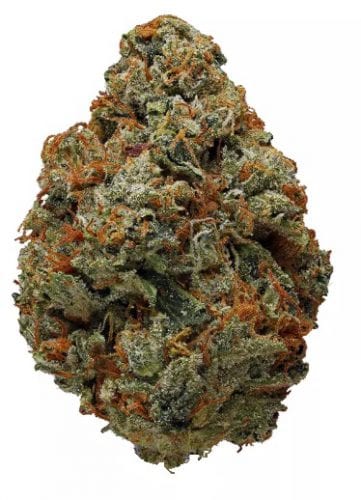
OG Kush Autoflower is one of the most well-known strains among users in the United States because of its perks of pain- and insomnia relief. However, the autoflowering variant of the OG Kush is turning the table for cannabis enthusiasts these days.
OG Kush is one of the uncomplicated strains to grow in a hot climate. It is gainful to use a controlled atmosphere when growing OG Kush indoors. In addition, outdoor growers must advance the farm site to ensure the atmosphere is hot and tropical.
OG Kush seeds form into short, compact plants. They are quite dense and grow up to heights of 37 inches. Because this is an autoflowering strain, the absence of daylight hours does not influence its growth. Preferably, it automatically switches from the vegetative growth stage to the flowering stage. Therefore, autoflowering strains flower a lot quicker than other varieties.
#2 – Sour Diesel

Sour Diesel first came in southern California and has since become well-known among cannabis enthusiasts worldwide. This Sativa-dominant hybrid produces densely stuffed buds with an average THC content of around 19%.
In an outdoor, warm-atmosphere grows, Sour Diesel plants can create up to 600g each. They’re inclined to powdery buildup but resistant to most different pests, making them perfect for hot, bone-dry regions.
#3 – White Widow Autoflower
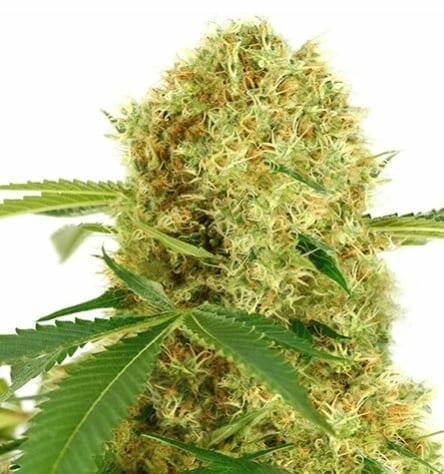
White Widow is one of the trouble-free strains to grow in a hot climate. Besides, White Widow is a top-rated cannabis strain that most cannabis enthusiasts prefer.
The White Widow strain can endure both cold and hot temperatures easily. It produces the best strains that can rise to 20 inches.
You can get an expected yield of 190-240 grams from each plant within 75-85 days. The buds leave an earthy or woody fragrance and taste. White widow automatically can transmit a soft high that can relax your body and mind.
#4 – Amnesia Haze Autoflower
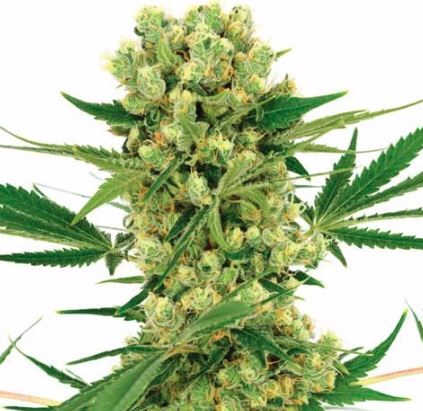
Its Indica roots came from Afghani and South Asian origin, while its Sativa origins were introduced from Thai, Hawaiian, Cambodian, Jamaican, and Haze. It’s perfect for hot locations. This honor-winning strain produces up to 700g per plant and boasts an average THC content of around 21%.
Amnesia Haze Autoflower takes somewhere in the range of 9 and 12 weeks to flower. You can expect approximately 7 ounces per square meter of strains if you are growing indoors, while you can get 7 ounces per plant if you are growing outdoors. As such, it is a genuinely high-yielding herb. Amnesia Haze Autoflower is a small marijuana plant similar to any autoflowering plant, reaching about 26 inches.
#5 – Chocolope

Chocolope is a simple cannabis strain to grow and enjoy. These marijuana seeds should be cultivated in well-ventilated areas, as the herb strains incline to molds. Make sure there’s no risk of frost when planting these strains’ seedlings. To have better command over these issues, experts suggest growing Chocolope indoors, especially for beginners.
If you choose to grow this marijuana strain outdoors, it’s essential to keep its humidity levels intact. Instead, you must reproduce a sunny, warm, refreshing Mediterranean setting for your Chocolope cannabis plants to flourish.
#6 – Bubblegum

When growing the Bubble Gum marijuana strain outdoors, you have to enhance the climate condition. The plant must stay warm and dry with lots of sunshine to flourish. You can harvest somewhere between mid to late October. You can hope to yield around 14 ounces of usable cannabis per plant.
Even first-time cannabis growers find the Bubble Gum strain simple to cultivate. It is even more valid for seasoned growers. However, this strain is quite sensitive to spoiling and molds. So, when growing Bubble Gum outdoors, ensure you grow site is kept dry and sheltered.
#7 – Critical Mass CBD Autoflower
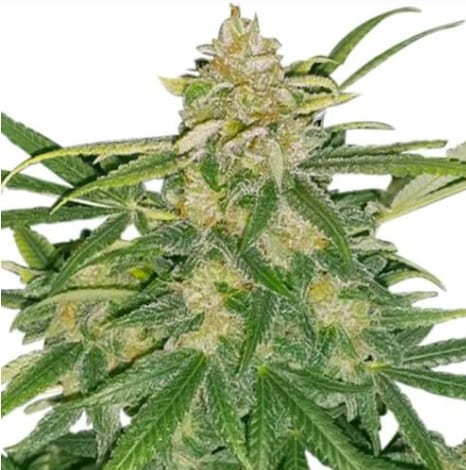
When it comes to the best cannabis strains to grow in dry and hot climates, you won’t regret Critical Mass CBD. Instead, it prefers a Mediterranean climate but can flourish in any environment.
The plants can be quite large and are best suited for outdoors. However, you can quickly grow Critical Mass CBD Autoflower seeds indoors because autoflowering strains do not grow as large as traditional varieties. However, these best strains are quite resilient but can bite the dust from frost or suffer from mold if not kept dry.
This fast-growing cannabis strain takes around 8 weeks to flower. If growing this strain outside, I hope to harvest around mid-September. These seeds yield about 4-6 ounces of usable cannabis per 3 square feet of space when growing indoors. Outdoor growers can anticipate slightly higher yields with the proper conditions.
#8 – Tutankhamon

If you plan on cultivating this herb outdoors, you can hope for high yields. The flowering times of such strains are approximately 60 days and harvest time for outdoor strains usually occurs around mid-October.
When ripping a bong stacked with Tutankhamon, smokers might be pleasantly surprised at the taste that rolls over their tongues. The strain features cranberry, raspberry, blueberry, nectar, licorice, and butterscotch flavors. The aromas are mesmerizing and render the fragrances of orange, fruity, and earthy.
#9 – Jack Herer
Jack Herer is one of the effortless strains to grow in a hot climate. Jack Herer is a favorite cannabis strain among cannabis growers and consumers. Cannabis first appeared in the Netherlands in the 1990s, and this Sativa-weighty hybrid strain immediately rose to prominence because of its strength and energetic buzz it gives the user. Although it can grow well indoors, Jack Herer is known to flourish outsides in warm climates.
Jack Herer plant grows tall with a high THC content reaching up to 20%. Moreover, it can endure germs and pests effectively, making them relatively easy and carefree to grow. Many call this strain a “grower’s dream” since these strains flower fast and produce high yields.
#10 – Super Skunk
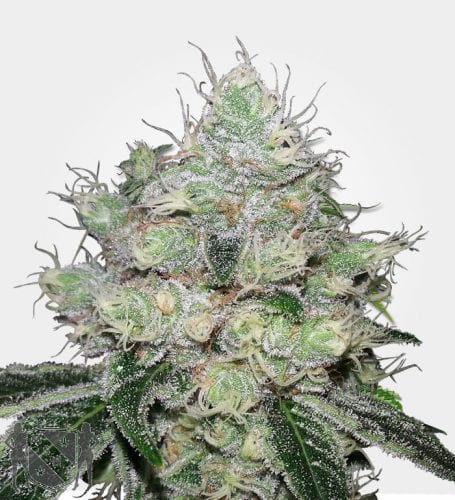
Super Skunk grows best in sunny and Mediterranean climates. For the best yields, you should go for harvest in mid-September to mid-October. The amount of usable plant may vary per the care given, but this Skunk can get us up to 21 ounces of flowers per plant in ideal conditions.
When growing this strain indoors, you might get comparatively less yield. Experienced growers can achieve up to 18 ounces of usable buds per square meter. Besides, you can expect its flowering time in about 8 to 9 weeks.
Final Thoughts on Cannabis Strains for Sunny Hot & Mediterranean Climates
Growing good marijuana is all about experimentation. Novice growers might need to start choosing strains with a history of success in their novel climates, but they should now have all the knowledge to assess any strains’ characteristics. As long as they purchase high-quality seeds and consider their plants fairly, growers can deliver good yields in almost any atmosphere.
FAQs:
Are there any issues with growing cannabis in a humid climate?
Marijuana plants prefer humidity to grow, but you need to ensure that it doesn’t get too much of it.
What is necessary to keep cannabis strains intact in hot climates?
If you plan to grow your buds in a hot climate, ensure that it doesn’t dry out. Marijuana plants absorb so much water in hot weather. If they don’t get enough water, they tend to dry out.
What exactly is a dessert strain?
The most frequent dessert strains contain various cannabis kinds with varied terpene profiles, whether minty, sweet, or fruity.
How can you recognize heat stress signs in cannabis plants?
Many garden plants exhibit the classic drooping symptoms of leaves and branches when the rate of moisture loss exceeds the pace at which the plant can restore that water loss. If in doubt, act quickly. Remove your plant from direct sunshine (or turn off your interior lights for a bit) and try to cool the environment down, repositioning the plant if required.
How do you deal with hot soil when producing cannabis?
Water may cool down an overheated soil container and keep it out of direct sunshine. Keep black (heat-absorbing) containers out of direct sunlight since they can overheat the soil and root ball. Instead, cover the container with white or reflective material or relocate the plant to a more peaceful location. It takes time for the soil to cool down once it has overheated. As is always the case, prevention is preferable to cure.
How hot is too hot for cannabis plants grown indoors?
Indoor gardeners must take measures once temperatures rise above 30oC (86oF). Some gardeners avoid growing inside during the middle of the summer because they know that avoiding hot weather improves harvest quality/quantity. On the other hand, serious growers will add internal air conditioning and understand that the cost is part of the cost of preserving quality when growing in a hot area.
Can marijuana strains be grown at high temperatures?
Although there are a variety of strains that can thrive in warm and humid areas, a few varieties can flourish in hot and sunny climates. In the post, we’ve compiled our top recommendations.
Is it preferable to cultivate marijuana strains indoors or outdoors?
If you reside in a tropical climate with plenty of heat, grow the plants accordingly. Do it if it grows nicely inside. If not, cultivate them in the garden.
Can inexperienced growers produce marijuana in severe heat?
Growing marijuana in high heat conditions may be tricky. Beginners will have a difficult time, but there’s no reason to believe they won’t be able to grow.
Is it possible to produce cannabis in freezing temperatures?
Cold temperatures can harm marijuana plants. The most significant advantage of chilly weather is that it deters bugs. Plants cultivated outside require daytime temperatures in the mid-60s (18C) or above; otherwise, their development would begin to decrease considerably and eventually halt. Evening temperatures must be in the 40s (5C). Tissue loss may occur if this is not done. You may have difficulty when the temperature falls below 45 degrees Fahrenheit (7C).
What strains do well in hot weather?
Sativa-dominant strains survive and grow far more than indica-dominant ones. However, Indica cultivars are more vulnerable to heat than sativa varieties. This is because sativa strains originated in the equator, where the harsh sun and the summers are long. Indicas, on the other hand, are native to colder areas.
Do sativas like warmer temperatures?
Sativas are among the most significant marijuana strains to produce outdoors since they prefer warmer temperatures. Furthermore, they flourish in these harsh environments from hot and arid locations. The bright daylight, warmer temperatures, and long summers help them reach their total capacity.

